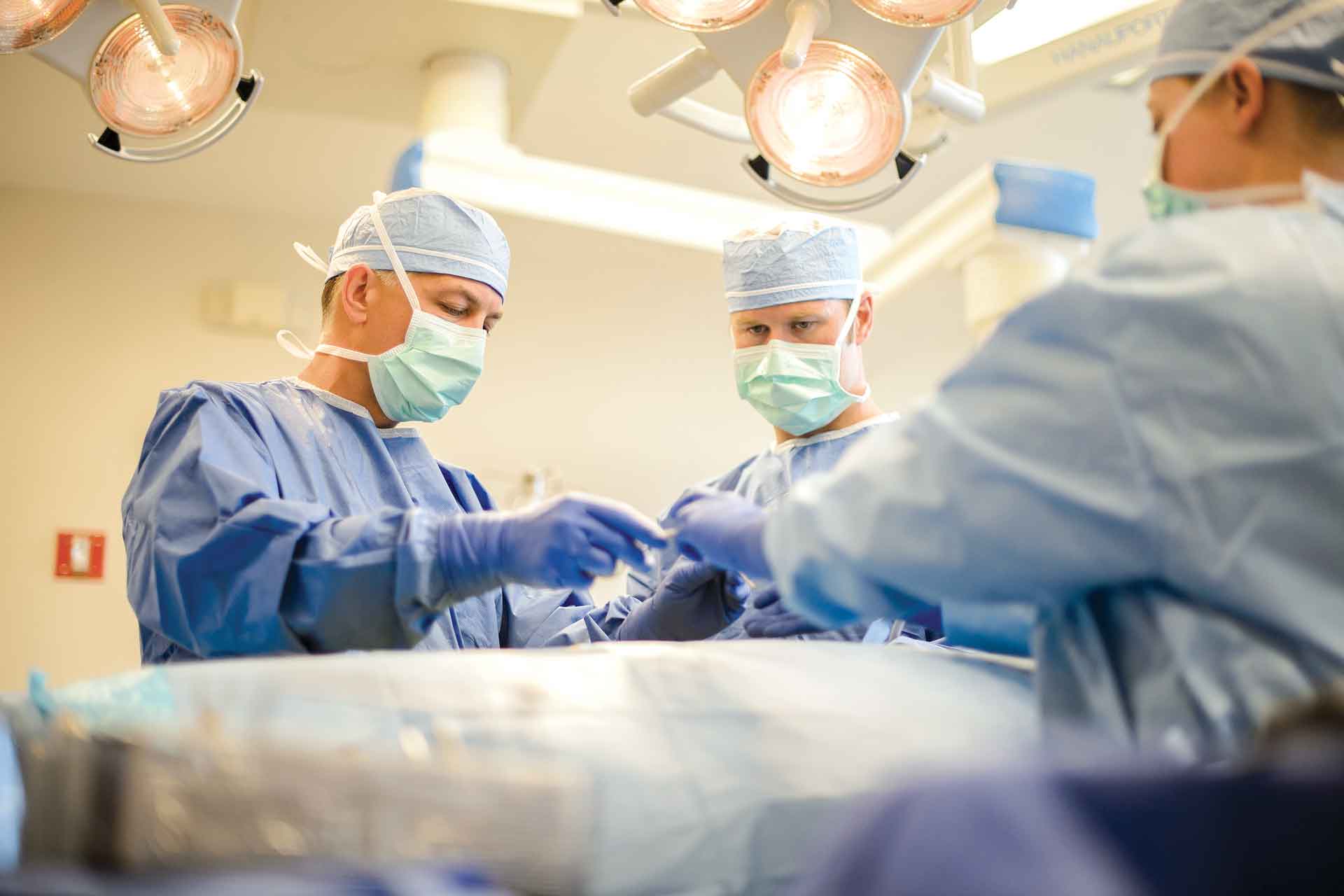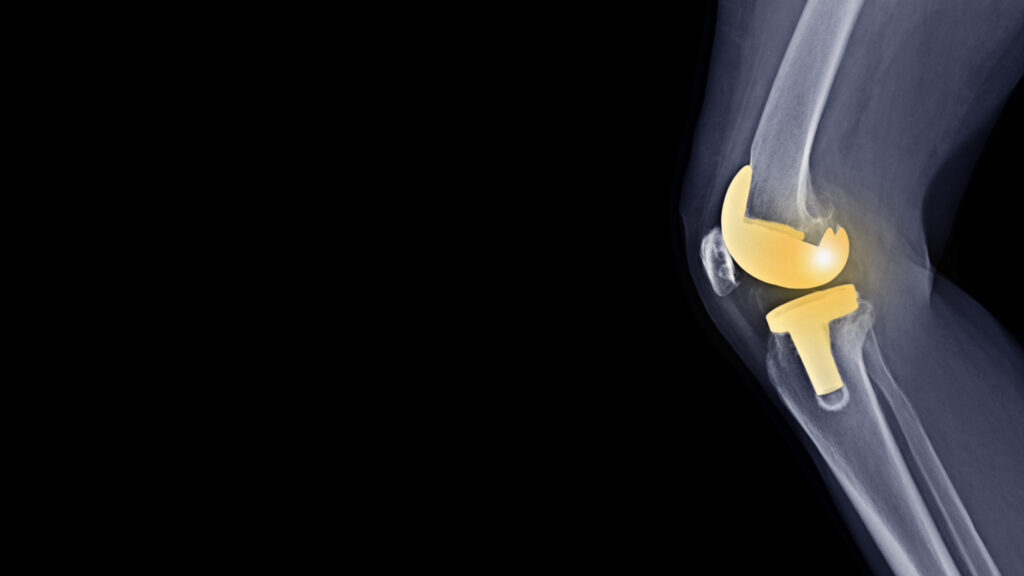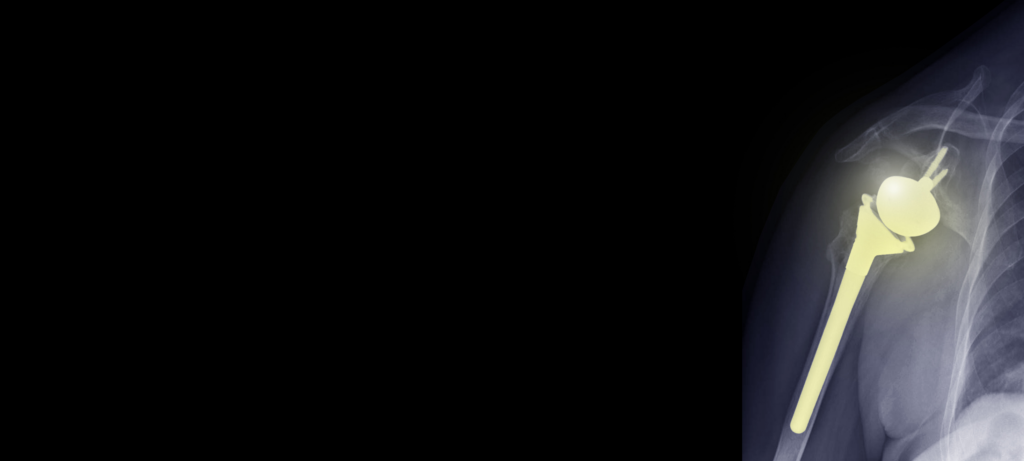
Total Joint Replacement
Moving parts wear out – and over time, need replacement. When those moving parts are your joints, consider an innovative approach to total joint replacement by Lakewalk Surgery Center and Orthopaedic Associates of Duluth, P.A.
We’ve assembled the regions’ most experienced surgeons, advanced technology, and superior care into one seamless process to serve you better. You can choose to have total joint replacement surgery on your knee, hip, or shoulder at Lakewalk rather than a hospital, meaning you’ll:
- Receive more personal care and have a more comfortable experience.
- Likely pay 1/3 less, on average, for the same procedure.
- Have a quicker recovery and a lower infection rate.
- Have efficient scheduling.
With 1,300+ total joint procedures performed from January 1, 2020 through March 30, 2023 and an average surgery time of about one hour, our team is skilled at providing efficient, quality care — the kind you won’t find anywhere else.
Total Hip Anthroplasty
Indications
The primary indication for a total hip arthroplasty is to relieve pain caused by severe arthritis. The destruction of articular cartilage can limit your ability to walk, climb stairs, and perform other functional activities. Articular cartilage damage is caused by inflammation of the joint which eventually causes joint deconstruction. If the pain is very severe, a person may not move that joint like he/she should causing muscle weakness and joint stiffness.
Total Hip Arthroplasty Surgery
The normal hip is a ball and socket joint. The socket is a cup shaped bone on the pelvis and the ball is the head of the femur. The surgeon will remove the damaged ball, which is the upper end of the femur, and then replace it with an artificial joint called a prosthesis. The prosthesis is a metal or ceramic ball attached to a metal stem. A canal is made in the femur bone to allow the metal stem to be inserted into your femur. A metal alloy socket with a polyurethane liner is placed into the pelvis to replace the arthritic socket. This procedure can take 2-4 hours.
Recovery
The recovery process after a total hip replacement varies depending on your previous level of activity, how your body responds to the surgery, and your level of activity after surgery. The majority of people walk with a walker for 2-3 weeks and then move on to a cane until they feel stable enough to walk independently. You will notice swelling of the hip and knee for up to 3-4 months after surgery.
Often, after a total hip replacement, you are referred to physical therapy that is done either in your home if you have difficulty leaving your home or in an outpatient clinic. The therapist will perform an evaluation of your level of function, strength, and range of motion. Based on the evaluation, the therapist will develop exercises and other treatments to help you reach your goals of increased function and decreased pain.
Physical therapy rehabilitation after a total hip replacement usually lasts for 4-8 weeks. Your physical therapist will also help you determine when it is safe for you to start walking without using an assistive device, such as a walker or a cane.
Common and normal recovery signs include bruising around the hip as well as down the entire leg. Bruising can look deep and dark. It might also look yellow or green in color. This bruising can develop as late as 3-5 days after surgery and will resolve with time.

Total Knee Anthroplasty
Indications
The primary indication for a total knee arthroplasty is to relieve pain caused by severe arthritis when a nonoperative treatment fails. The destruction of articular cartilage can limit your ability to walk, climb stairs, and perform other functional activities.
Total Knee Arthroplasty Surgery
A knee replacement consists of three parts:
1. A femoral (thigh bone) component, which is made out of metal.
2. A tibial (lower leg bone) component, which is a metal component with a polyurethane spacer.
3. A patellar (knee cap) component, which is plastic and attached to the undersurface of the original knee cap.
During the surgery, the surgeon will remove the damaged cartilage and bone from the end of your femur and the top of your tibia. Then the surgeon will use trial parts to make sure they are the right size for your knee. Finally, the surgeon will clean the bone with saline solution and “glue” the prosthetic compartments with cement. You may have a pressed metal component where the metal is porous which allows your bone to grow into the metal. Every procedure is different, but they generally take up to 2 hours. Lastly, the surgeon will close the incision with sutures and staples. The incision for a total knee replacement is usually 8 to 10 inches long on the front of the knee.
Recovery
The recovery process after a total knee replacement varies depending on your previous level of activity, how your body responds to surgery, and your level of activity after surgery. The majority of people walk with a walker for 2-3 weeks and then move on to a cane until they feel stable enough to walk independently. You will notice swelling of the knee for up to 3-4 months after the surgery.
Often, after total knee replacement, you are referred to physical therapy that is done either in your home if you have difficulty leaving your home or in an outpatient clinic. The therapist will perform an evaluation on your level of function, strength, and range of motion. Based on the evaluation, the therapist will develop exercises and other treatments to help you reach your goals of increased function and decreased pain. Physical therapy rehabilitation after a total knee replacement usually lasts for 6-12 weeks. Your physical therapist will also help you determine when it is safe for you to start walking without using an assistive device.
Common and normal recovery signs include bruising around the knee and even down the leg. Bruising can look deep and dark. It might also look yellow or green in color. This bruising can develop as late as 3-5 days after surgery. This will resolve with time.

Total Shoulder Anthroplasty
Indications
The primary indication for a total shoulder arthroplasty (TSA) is when severe shoulder arthritis is limiting the quality of the patient’s life and has not improved with conservative treatments. Shoulder joint arthritis may limit your ability to perform self-cares, household duties, driving, and other functional activities. The recovery for a patient following a TSA surgical procedure will vary in length and aggressiveness depending on factors such as:
- Degree of arthritis
- Acute versus chronic condition
- Length of time immobilized
- Strength/pain/swelling/ROM status
- Rehabilitation goals and expectations
Total Shoulder Arthroplasty Surgery
A shoulder replacement consists of two parts:
1. The humeral (the ball) component, which is made of metal. This is fixed to the arm by a stem that fits into the shaft of the bone.
2. The glenoid component (the socket) is made of a high-dense plastic material.
During the surgery, the surgeon will remove the damaged cartilage and replace with the above mentioned components. Every procedure is different, but they generally take up to 1-2 hours to complete. The incision for the TSA is approximately 4-6 inches long and is often in the front portion of the shoulder. There may be sutures/staples to remove at your follow-up appointment.
Total vs. Reverse Total Shoulder Arthroplasty
A standard TSA replicates the normal mechanics of the shoulder, replacing the ball and socket as they are normally found in the human body. A TSA also preserves a patient’s rotator cuff muscles. A reverse TSA “switches,” or reverses the ball and socket placement. The reverse TSA is usually indicated when a patient has poor integrity of the rotator cuff muscles or has had multiple failed rotator cuff repairs, along with shoulder arthritis.
Recovery
The recovery process after a total shoulder replacement varies depending on your previous level of activity, how your body responds to surgery, and your level of activity after surgery. Often, after a total shoulder replacement, you are referred to physical therapy that is done either in your home, if you have difficulty leaving your home, or in an outpatient clinic. Based on your evaluation, the therapist will develop exercises and other treatments to help you reach your goals of increased function and decreased pain.
Common and normal recovery signs include bruising around the shoulder, upper arm and even into the chest. Bruising can look deep and dark. It might also look yellow or green in color. This bruising can develop as late as 3-5 days after surgery and will resolve with time.

Duluth, MN 55805
Contact Us
"*" indicates required fields